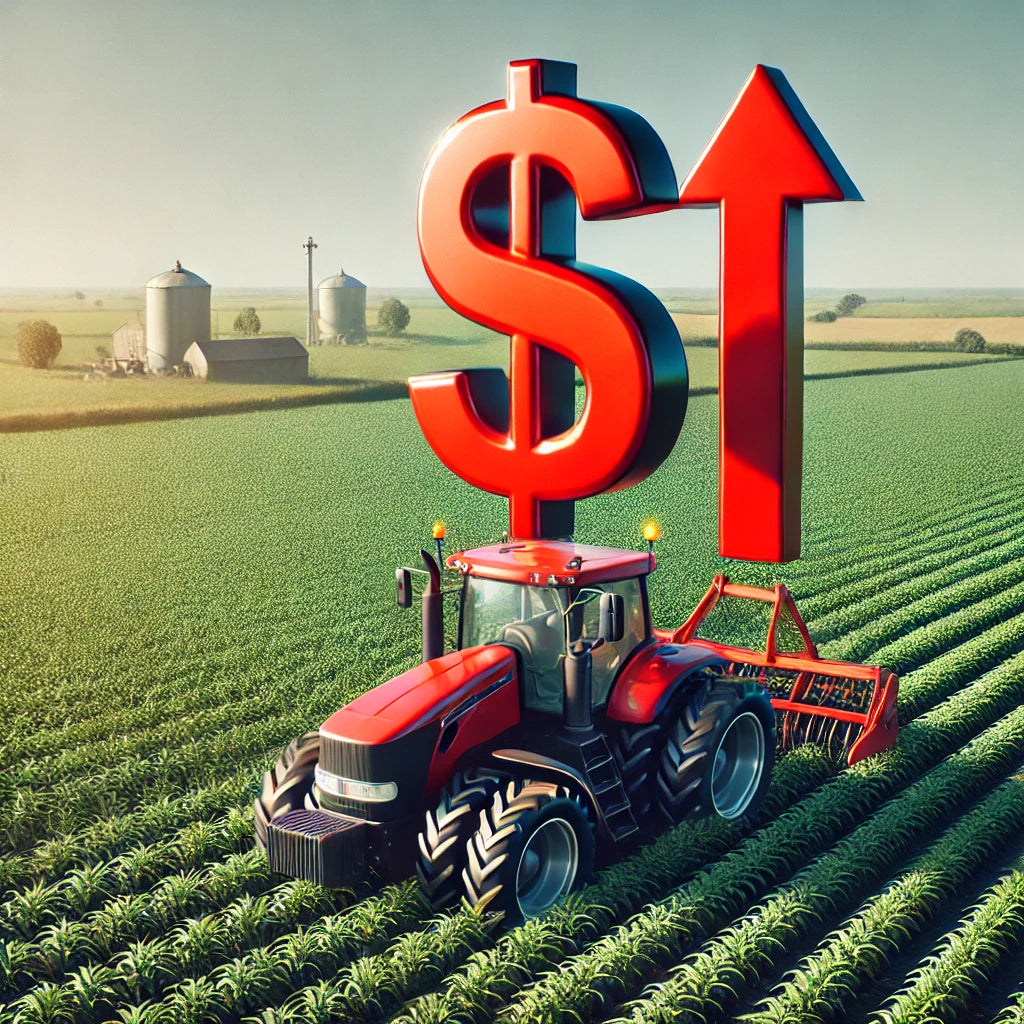
How Tariffs Impact Farmers and Why Older Equipment Could Be a Hedge
Tariffs, often referred to as taxes on imported goods, have profound effects on U.S. farmers. From rising costs of agricultural inputs to delays in critical upgrades, tariffs can reshape operational decisions. In this updated article, we’ll explore these impacts more comprehensively, focusing on how large equipment, replacement parts, and older machinery can offer farmers practical solutions in a tariff-heavy economic climate.
The Role of Tariffs in Agriculture
Recent tariff discussions, including the possibility of a 10% universal tariff in 2024, pose risks to farmers reliant on imported machinery and inputs. Historically, tariffs have led to price hikes across the supply chain. For instance:
- Steel and Aluminum Tariffs: These affect the costs of farm machinery and tools made with metal components. Manufacturers, such as those producing tractors and combines, pass these costs directly to buyers, resulting in higher purchase prices Purdue Ag College, Successful Farming.
- Retaliatory Tariffs: U.S. export markets suffer when other countries retaliate with tariffs of their own. Between 2018 and 2019, retaliatory tariffs reduced U.S. agricultural exports by $27 billion, hitting key sectors like soybeans and pork Tax Foundation.
In addition to immediate price increases, tariffs have long-term effects on global supply chains. Countries impacted by tariffs on imports often shift production to domestic alternatives or explore new trading partners, further destabilizing international markets Successful Farming, Tax Foundation.
Impact on Equipment Purchases
Large equipment purchases, such as tractors, combines, and sprayers, are among the biggest expenditures for farms. When tariffs increase costs on raw materials like steel and aluminum, the sticker price of new machinery rises significantly. For example:
- Material Costs: Tariffs on imported steel have driven up the cost of manufacturing farm equipment by as much as 25%. This burden falls on both manufacturers and end-users, leading to higher retail prices Successful Farming.
- Technology Costs: Newer equipment often incorporates cutting-edge technology, such as GPS and automation. These systems rely on components like semiconductors, many of which are imported. Tariffs on these parts could exacerbate supply chain challenges and increase costs even further.
These elevated costs can push farmers to delay necessary equipment upgrades, which impacts their efficiency and ability to scale operations.
The Challenge of Parts and Repairs
Beyond new equipment, tariffs also affect the availability and cost of replacement parts—a critical issue for farmers who maintain existing machinery. Some key concerns include:
- Imported Parts: Many equipment components, such as hydraulic systems, belts, and bearings, are sourced internationally. Tariffs on these imports can raise the cost of repairs and maintenance, making it harder to keep equipment operational.
- Repair Delays: Tariffs often lead to supply chain disruptions, causing delays in part availability. Farmers relying on quick repairs may face longer downtimes during peak planting or harvesting seasons Tax Foundation.
- Counterfeit Risks: When genuine parts become too expensive or hard to find, farmers may turn to counterfeit or low-quality alternatives, which could compromise equipment performance and safety.
Older Equipment as a Strategic Hedge
In light of rising costs and parts shortages, older equipment presents a compelling alternative. Here’s why:
- Affordability: Pre-owned equipment, especially models manufactured before recent tariff policies, offers significant savings. These machines often retain their functionality without the hefty price tag of new models.
- Simpler Mechanics: Older equipment is less reliant on complex electronics and imported components, making it easier and cheaper to repair. Farmers can often handle basic repairs in-house using affordable, locally sourced tools and parts.
- Resilience in a Tariff Environment: Because older equipment avoids many of the supply chain complications associated with new machinery, it serves as a hedge against volatile markets.
- Access to Manuals: Farmers who rely on older equipment benefit greatly from detailed manuals that provide step-by-step maintenance instructions. Businesses like yours, which offer vintage equipment manuals, play a vital role in helping farmers maximize the lifespan of their machinery.
Practical Tips for Farmers
- Invest in Maintenance: Keeping older equipment in top condition can minimize downtime and eliminate the need for expensive new purchases.
- Stockpile Key Parts: Consider buying critical replacement parts in advance to avoid future shortages or price hikes.
- Leverage Domestic Suppliers: Whenever possible, source parts and inputs from domestic producers to bypass tariff-related costs and delays.
Conclusion
Tariffs are an unpredictable but critical factor in agricultural economics. While they increase the costs of equipment and supplies, strategic decisions—like relying on older machinery—can help farmers stay resilient. Businesses offering manuals for vintage farm equipment empower farmers to maintain these valuable assets, providing a lifeline in a turbulent economic environment.
